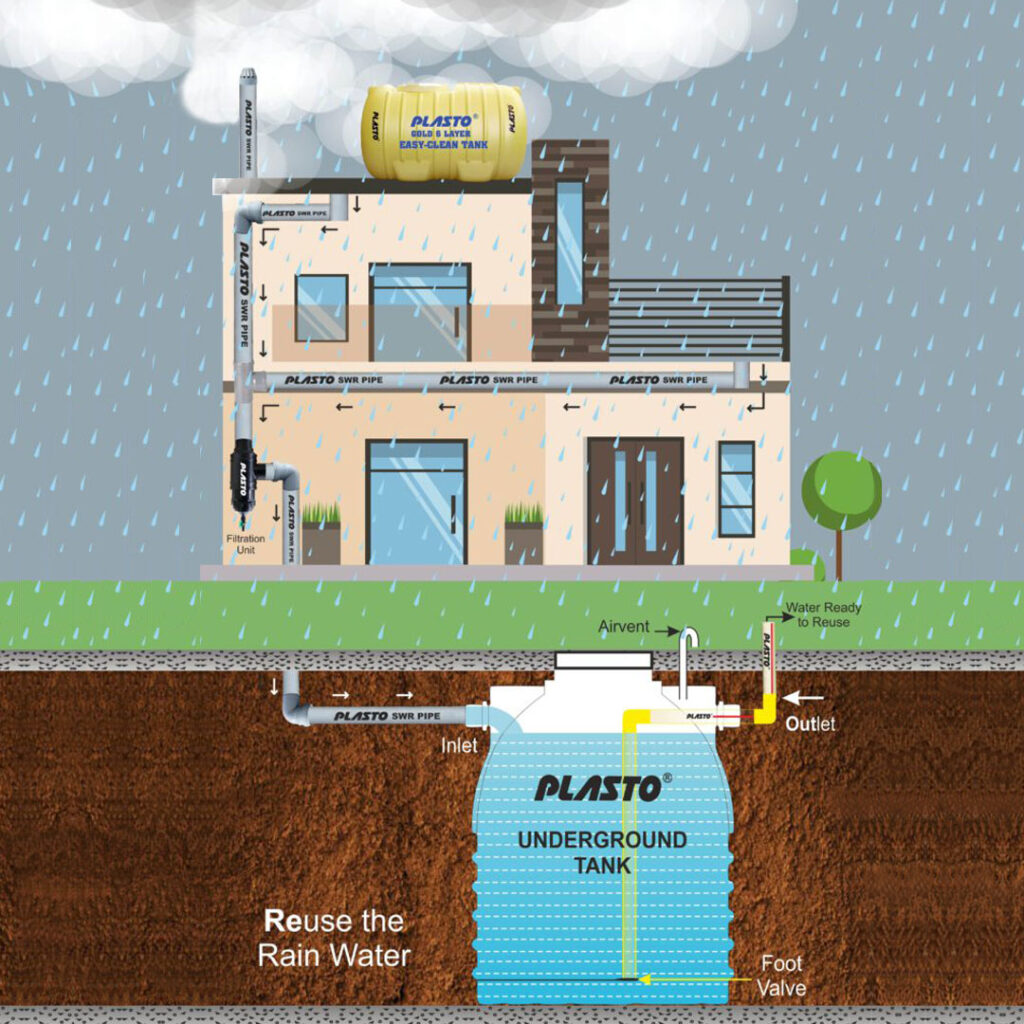Rainwater Harvesting: Great addition to your green home ecosystem.

Introduction:
In recent times, India is facing the most severe problem of a water crisis in several regions. There are many reasons like depletion of natural resources, groundwater exploitation, and lack of government planning, industrial waste, uneven distribution, and others. Thus, it is important to switch to sustainable living where every homeowner should reduce one’s environmental impact, right from replacing leaking taps to reusing wastewater.
As per the UNESCO World Water Development Report, India is the largest extractor of groundwater in the world, drawing 260 cubic km per year, which is more than China and the US combined which comes up to 25% of the groundwater extracted globally. With 21 Indian cities are expected to run out of the groundwater, India can face an alarmingly dry future with the need to change the way its sources of water.(Source UNESCO Report)
What is Rainwater Harvesting?
It is the most simple and effective method of water conservation. Rainwater harvesting process includes collecting, storing, purifying and distributing rainwater for human use. Rainwater harvesting is now mandatory in India. The State Governments have made it compulsory to all the builders and contractors to follow the rainwater harvesting process at all public establishments, residential buildings, societies, and commercial complexes. Rainwater harvesting is the most sustainable way of water conservation.
Benefits of Rainwater Harvesting:
- Suitable source for irrigation
- Supplement in drought
- For drinking purpose
- Reduce water bills.
- Easy to maintain.
- Underground water tanks are designed to be hygienic environments for water storage, keeping water cool and oxygenated.
- Low maintenance
- No wasting money on water tankers
- Groundwater level maintained.
Rainwater Harvesting Components:
- Gutters
- Roof washers
- Cisterns
- Piping Labelling
- Inspections
- Maintenance
Rainwater Harvesting Techniques:
In India, most of the pipelines are old, especially in the remote or rural areas. Even though there are connections, the water supply is very limited. There is uneven distribution of water supply based on the difference in lifestyle in rural and urban areas.
There are countless ways in which rainwater can be collected and stored in rainwater harvesting tanks or rainwater harvesting storage tanks. This includes installing rain barrels with pipes, hanging rain funnelling chains, rooftop containers, rainwater storage tanks that channel rainwater into sumps and bore wells. Some can even use it for a min-reservoir in your garden.
Roof-top water Rainwater Harvesting:
It is the most popular method of rainwater harvesting. It involves diverting and storing rainwater that falls on the roof of the house. The rainwater is stored in rainwater storage tanks which later get collected in the groundwater storage area.
Dams:
Dams are used to harvest a lot of water. Here, the natural flow of groundwater is obstructed and is stored underground. This technique is majorly used for irrigation purposes.
Underground Tanks:
These are a wonderful way for rainwater harvesting wherein an underground rainwater harvesting tank, rainwater collection pipes are installed underground to store water. These are constructed by digging into the ground and creating a space that is then cemented to reduce water infiltration. The top is properly sealed so that there is no leakage. Water is obtained through the rainwater collection pipes which are directly connected to the tank. Pumps are used to get the water out stored in rainwater storage tanks.
Water Collection Reservoirs:
In this process, rainwater storage is on roads and pavements. Water stored in this process can be used for irrigation purposes.
Slopes:
Rainwater, when flows in the ground are collected either in rainwater storage tank or underground. This is often an easy and natural way to harvest rainwater.
Trenches:
This is another traditional method to harvest rainwater for agriculture purposes mostly used in rural areas. In this method, the rainwater is directed to the farm using trenches.
Rain Barrels:
Rain barrels are used for harvesting rainwater that falls directly on the rooftops. The water from the rooftops directly gets collected in the rainwater harvesting storage tanks which are connected through rainwater collecting pipes.
These simple rainwater conservation methods are an incredible solution to save the acute water crisis hovering over India. These processes will provide the most sustainable and effective means of water management and can solve one of the biggest water scarcity problems in India. A stitch in time saves nine. Start contributing to society’s welfare at the individual level.

